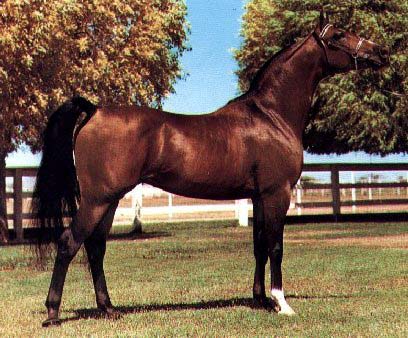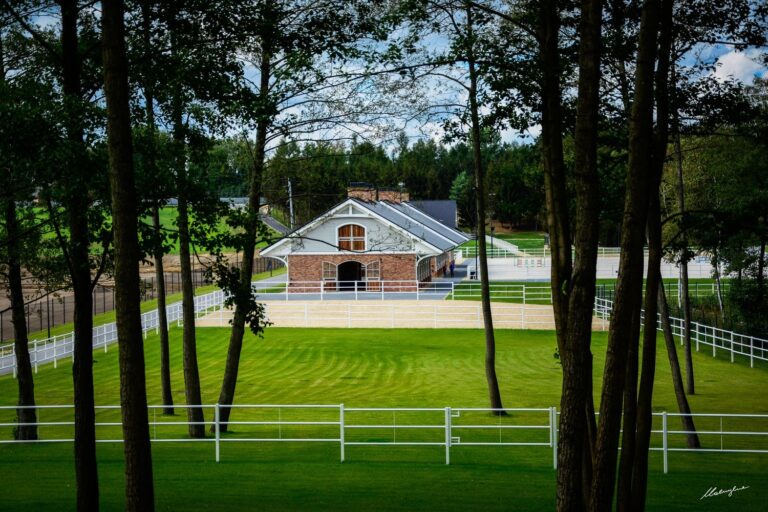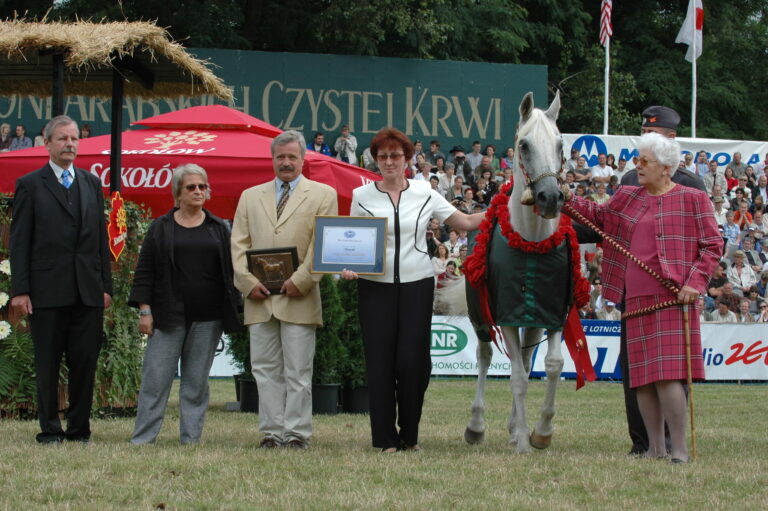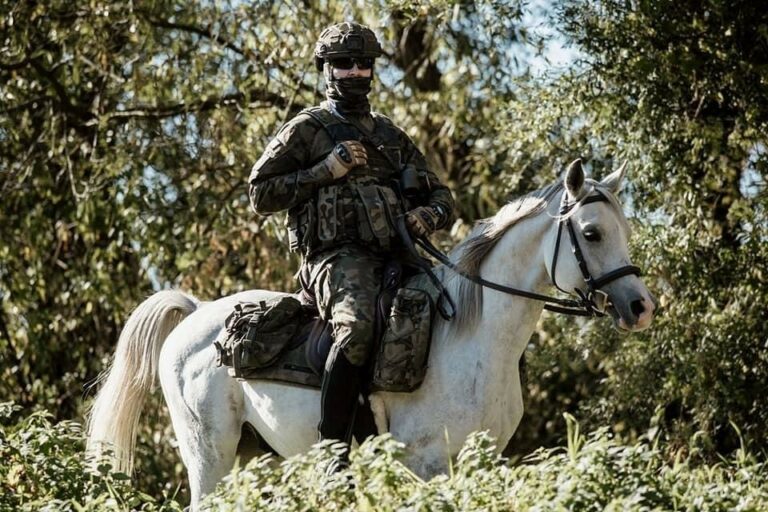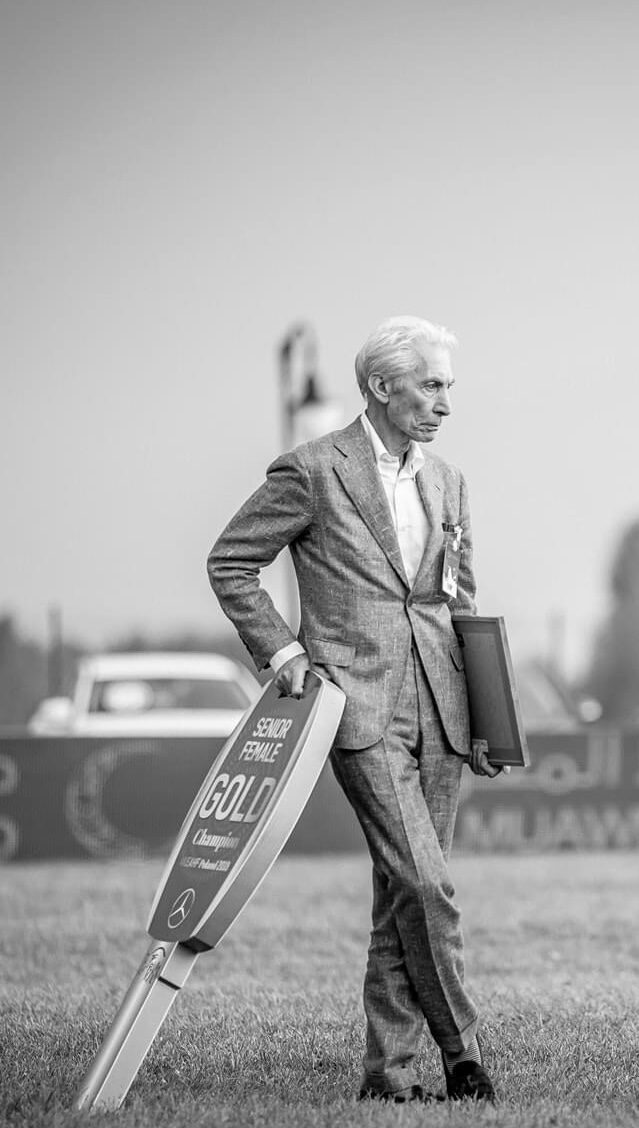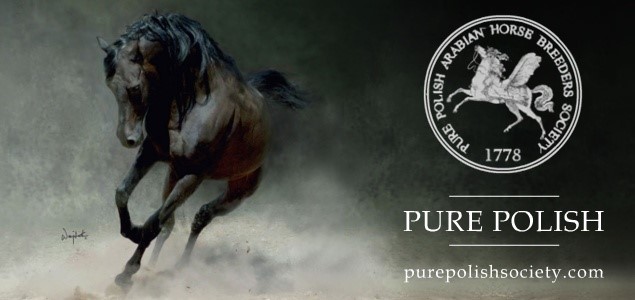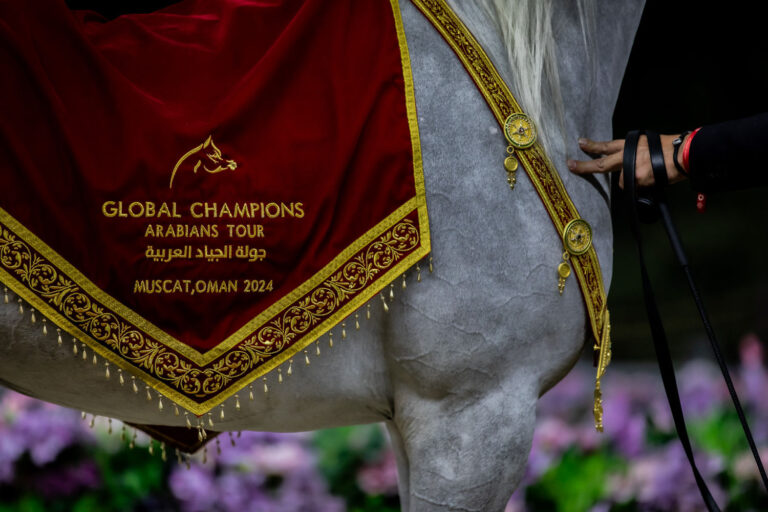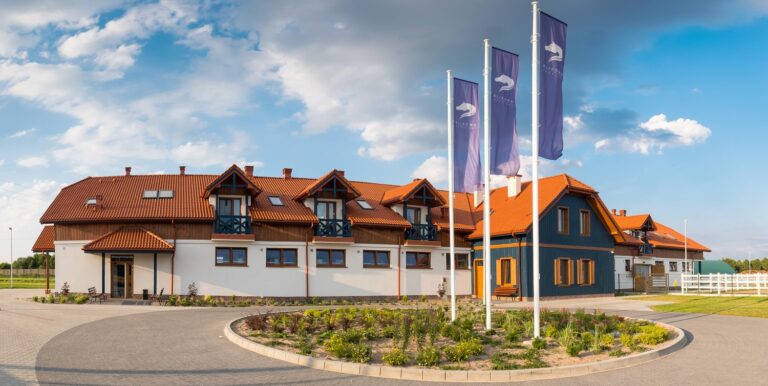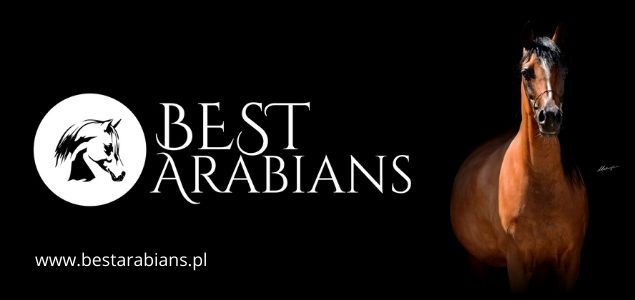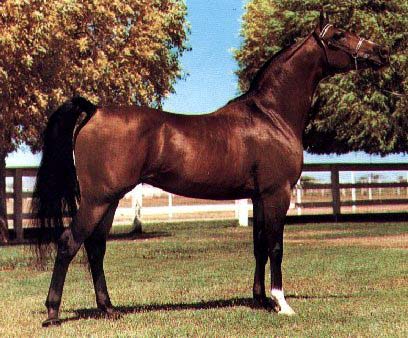
A million dollars – remains until this day an unbeaten record for a Polish Arabian stallion. Such an amount for EL PASO was offered in 1981 by Armand Hammer (1898–1990), an American oil tycoon descending from a Jewish family in Odessa. Although he was called “a friend of Lenin”, he was followed by the KGB when arriving in Moscow and by Kadafi’s secret service when in Libya. Upon his arrival in Poland groups of “sad gentlemen” in Polonez cars and Fiats traced his every step.
Janów ’81 and the horse that money couldn’t buy
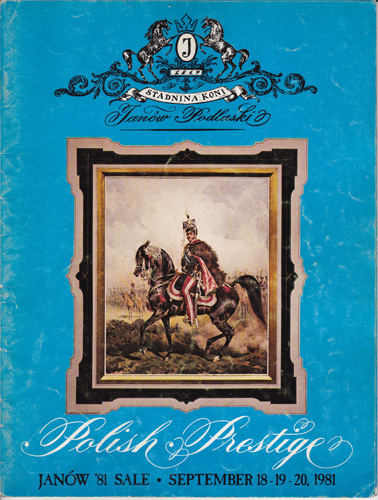
The auction in Janów, its 22nd edition, took place on September 20th, 1981. The sale’s results were listed on front pages of even such tabloids as “Express Wieczorny”, right under an announcement of the PZPR (Polish Communist Party) Central Committee Politburo, which shows of how great significance they were. “Armand Hammer’s arrival in 1981 caused some political pressure on us, because he was not only wealthy, but had friends in the Soviet Union”, recalls in an interview with polskiearaby.pl Marek Grzybowski, who at the time organized the Janów Sale as a representative of Animex (in those days the event was called Polish Prestige). “He intended to buy El Paso and was counting on this being made easy. The stallion was already well known. He had already managed to claim the titles of US Champion and the nickname of “The horse that money couldn’t buy”, because his breeders had numerous times declined to sell him, using him broadly in Polish breeding. When Hammer appeared in Poland, the horse was already designated for sale – he had left a suitable number of daughters”.
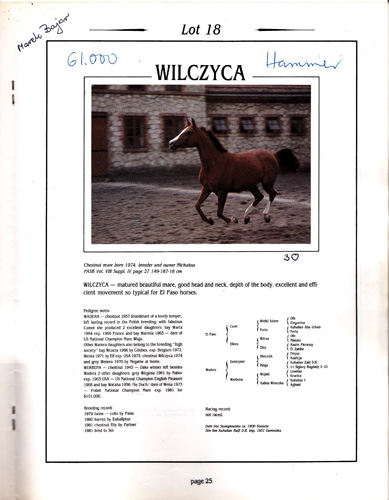
Indeed, in the pedigree base we find forty Polish daughters of El Paso (Czort – Ellora/Witraż) born during 1973–1982. The stallion, representing the Kuhailan Haifi d.b. sire line and the damline of Wołoszka 1810, was born in Janów in 1967. A grandson of Witraż and Wielki Szlem, he had the legendary Ofir twice in his pedigree, a horse that was lost in Russia after Janów was robbed by the Soviet Army in 1939. Luckily two famous grandsires of El Paso survived, saved by Jan Ziniewicz during the bombing of Dresden. As a result, 23 years later after those tragic war events, El Paso was born, whose significance surpassed the record price set in 1981. During 1972–1975 he was used in Michałów, later in Janów. Leased by Lasma Arabians (1976–1978), successfully shown in the US, including at Scottsdale and the US Nationals, he died in 1995 at the age of 23 years old. His last get was born in the US in 1994. In Poland he left such sons as Etogram (out of Etruria by Palas) and Europejczyk (out of Europa by Bandos). His most famous daughters include 4 full sisters born at Michałów, out of the mare Warmia (Comet – Wadera/Doktryner): Wizja, 1977 US National Champion and dam of Wiaźma; Wilejka, 1982 Polish National Champion and All Nations Cup Champion in Aachen, dam of the stallion Wojsław and mare Worskla; Wistula, sold at the famous Polish Ovation sale in Scottsdale in February of 1985; and Wersja, exported to the US similarly to her sire in 1981.
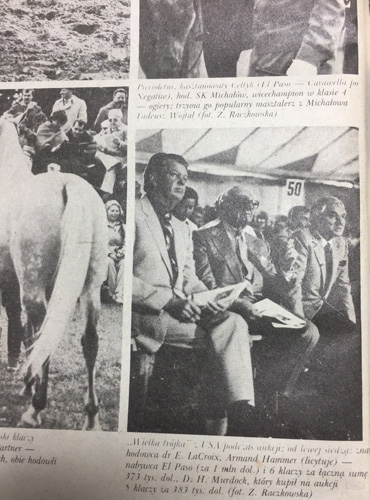
The sale of El Paso was a huge event not only due to the record price, but also because of who the buyer was. This is how Marek Grzybowski recalls that time: „Seated at a large table were breeders and representatives of the Animal Trade Association, but almost no one spoke English. Just as well, because thanks to this I could peacefully carry out the negotiations. They were quite long, because we didn’t want to give in too quickly. Suddenly Hammer said: I’ll give half a million dollars for the horse! Everyone’s eyes became round and I could see that they wanted to agree, but I said: wait a minute, we won’t accept half a million, but we can think about it for a million. Hammer hit the table with his hand and shouted: sold! And I thought: darn it, I put in a too low bid. And added: under one condition. Tomorrow is the sale and you must buy at least five mares. He paid 380 thousand dollars for those mares, but I still had the impression that if I said “a million and a half”, he would also have agreed”.
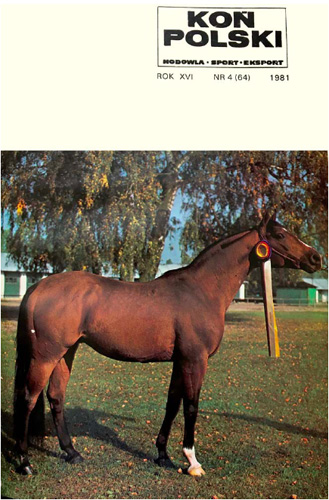
The 1981 auction offered 34 mares and one stallion and the bidding took place in a circus tent. Armand Hammer was seated next to other prominent buyers, Eugene LaCroix and David H. Murdock. “After the welcome speech by Director Andrzej Krzyształowicz and just prior to the auction El Paso was led onto the arena and M. Grzybowski announced the sensational news”, wrote Antoni Święcki, the then chief editor of “Koń Polski” in his coverage from Janów (4/1981). “Today Mr. Armand Hammer, a businessman from the US, purchased the 14 year old US and Canadian National Champion – the stallion El Paso – for one million dollars. This information garnered a round of applause”. Hammer, as agreed, also purchased six mares: Harsza (Ego – Harfa/Omar II) for 76 thousand dollars, 1972 Derby winner Sasanka (Almifar – Santa/Czort) for 80 thousand, Gonitwa (Palas – Gonagra/Negatiw) also for 80 thousand, Kampania (Bandos – Kama/Eleuzis) for 31 thousand from Janów Podlaski and the Michałów El Paso daughter Wilczyca (out of Wadera/Doktryner) for 61 thousand. He spent exactly 373 thousand USD. By the way, during that auction lot 1, Michałów’s Milada (Burkan – Mila/Gwarny), was announced as sold after which a buyer was not found. (Let’s recall the hysteria after the 2016 sale when the first bidding of Sefora ended in an announcement that the bidder could not be identified.)
An “unexpected” visit, or even two
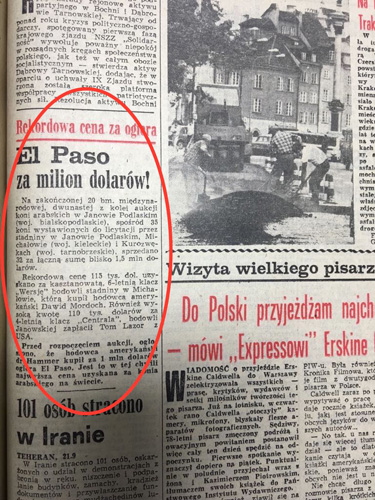
Soon after the 1981 auction the “Express Wieczorny” daily (September 22nd) reported on Hammer’s meeting with journalists which took place a day earlier. Armand Hammer announced that he came to Poland “unexpectedly”, which does not line up with reality. Since he made purchases two days earlier at Janów, then he must have been expected there; not to mention that Marek Grzybowski recalled the political pressure. In fact the visit’s entire course proves that it was definitely expected, from talks with the highest state authorities to a press conference. “Prime Minister Wojciech Jaruzelski welcomed on the 19th of this month the known American businessman, president of Occidental Petroleum Corporation, Dr Armand Hammer”, wrote the “Trybuna Ludu” daily, the official organ of the Communist Party, in its Monday edition (21.09.1981). Together with General Wojciech Jaruzelski, who was then the prime minister and minister of national defense, Armand Hammer was to talk about the participation of his company in “mutual investments”: “The American party wants to give Poland a loan of 100 million dollars to build a new sulfur mine near Tarnobrzeg and 40 million dollars to build a plastic compound plant in Włocławek”, wrote “Express Wieczorny”. What they really talked about we will probably never know, but it must have been a continuation of earlier negotiations, because the millionaire visited Poland several months before the sale, in mid-December of 1980, something that few people today know about.

The fact that nine months later El Paso was sold at a table and not during the sale could have been a nod toward the millionaire, a way to “soften” him or to show gratefulness for some of his promises. “I want to treat this as a beginning of greater things and after my return to the US I will tell about my impressions and suggestions to the president-elect of the US, whom I know personally, why it is worth to help Poland in the field of agriculture”, Hammer promised during a press conference ending that first visit (“Życie Warszawy”, 17.12.1980). As we know, the president-elect at the time was the anti-Soviet Republican Ronald Reagan. It is said that in the 80s Michail Gorbaczov placed Hammer on the list of participants in negotiations with Reagan (whose campaign was financially supported by the millionaire) and as an observer Hammer was the only private person who took part in the talks. Mariusz Janik wrote about this in a biographic article on the Forsal.pl website: “When asked in one of the interviews if he has more power than the main inhabitant of the White House, he smiled understandingly and nodded his head”. However, as we can deem in light of Hammer’s later fate, the agreed amounts did not come to Poland, apart from the payment for the horses. And anyway just three months later, on December 13th, 1981, Wojciech Jaruzelski imposed martial law in Poland and in the face of such a difficult political situation the negotiations with the Americans must have become greatly outdated.
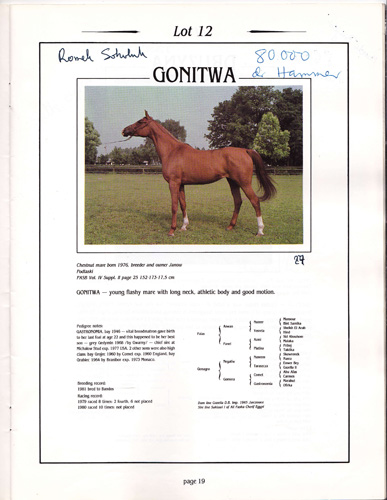
Do we know the real answer to the question why Hammer, who was in talks with the highest authorities of Communist Poland, took the time to visit Janów? Although he definitely liked horses, the reason could have been taxes (of course there could have been more reasons). In the same issue of “Koń Polski” in which he covered the auction and National Championships of 1981 Antoni Święcki published an interview with Andrzej Żółtowski, a cooperator of McNeill Group Inc from Florida. “Today the participation of financial tycoons in Arabian horse breeding is determined by financial and tax aspects”, explained Święciski’s interlocutor. “The support of the state is seen in exemption from taxation for 5 years from sums spent on establishing farms, purchases of horses and all other associated costs. They have specialists – lawyers, that developed a system of investing in the Arabian horse for protection and exemption from taxes”.
Agent, millionaire, bankruptcy
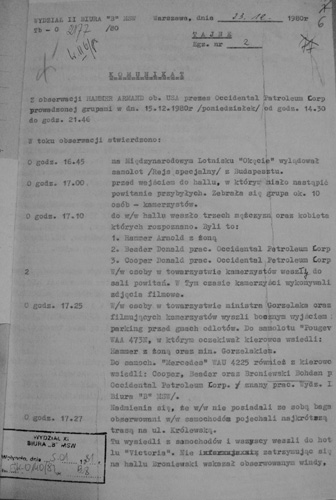
There were numerous legends about Hammer, and not just positive ones (he personally attended to those), who like other American businessmen resorted to investing in horses to evade taxes. “Armand Hammer dreamed about fame and respect all his life”, we read in the afore mentioned article from Forsal.pl. “For half a century of America’s post-war history he was one of the symbols of the country’s economic powers: in his time he was equal to the Rockefellers or Carnegy”. At the age of 23 he became the first foreign businessman with a license for activities in Soviet Russia. He was a great admirer of Vladimir Ilyich. “If Lenin asked me to jump out of a window, I probably would”, he declared. He obtained millions of dollars for Moscow, using a network of companies and banks, trading works of art confiscated by the Bolsheviks, including Faberge eggs, icons from tsarist monasteries and paintings from the collections of the Ermitage, not to mention that he often sold counterfeits to the buyers. Also false were his testimonies before FBI agents – but he managed to avoid jail. He made his greatest wealth on Libyan oil. On his last hagiography, as Janik informed, he spent 200 thousand dollars! However the myth fell soon after his death in 1990: “Among the thousands of declassified notes from the archives of the KGB and FBI and hundreds of hours of talks carried out in Hammer’s office emerged a completely different picture of the legendary millionaire”. First, it came out that the gigantic fortune, assessed by Forbes in 1986 at 200 million USD was an empty shell, because his debts were larger. Unsuccessful business activities cost Occidental Petroleum, Hammer’s company, more than 2.5 billion USD and the promises of donations to charities and cultural institutes turned out to be empty phrases. “Therefore investments in the USSR and China, such as a film studio and statues of the boss, got axed”, concluded Janik.
A figurehead and “carrier of intelligence”
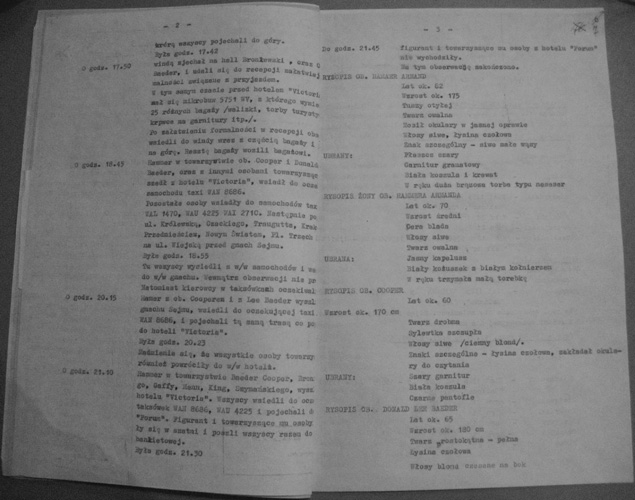
In Poland Hammer was welcomed like a star. Nine months prior to the auction, on December 15th, 1980, tens of TV reporters were awaiting him at Warsaw’s Okęcie airport. Thanks to documents of the secret police known under the name of Security Service (SB)* we know that the millionaire’s every step was monitored. Hammer had a file set up, thanks to which we even know the details about his clothing. These notes shed a new light not on the history of selling El Paso, but on the associated historic events. Hammer was followed as a “carrier of intelligence”. The task of the secret police was to “secure a secret search”. The “figurehead” was taken under observation right after his arrival by private plane (a special charter from Budapest). From that moment on he was under a watchful eye. Documents from the observation were received by lieutenant P. Kamecki. Hammer was accompanied by: his wife, employees of Occidental Petroleum Corp – Donald Baeder, Donald Cooper and Bohdan Broniewski, described as a “known employee (or: known to the employees) of Dept I Office B of the Ministry of Internal Affairs”. The group was welcomed by Minister Gorzelak. Awaiting the guests on the parking lot were Peugeot and Mercedes cars, which took them to the Victoria hotel, from where they headed to the Polish Parliament. The secret police file also tells us that Hammer was about 175 cm tall, obese, had a round face, wore glasses in light frames, had grey hair and was balding on the forehead and had a grey, small mustache. He was dressed in a grey coat, navy suit, white shirt and a tie. In his hand he held a brown briefcase. His wife was of average height, with a pale and oval face, grey hair; she wore a white sheepskin with a white collar and a light-colored hat. The observation was carried out in total by some dozen officers in at least seven cars. “The operation room was not used”.
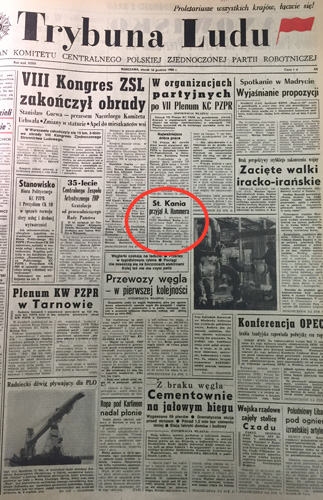
As the “Trybuna Ludu” daily wrote the day after his arrival: “On the 15th the first secretary of the PZPR Central Committee Stanisław Kania welcomed the president of the board of Occidental Petroleum Corporation, Dr. Armand Hammer, who was visiting Poland at the invitation of chairman of the Planning Commission by the Council of Ministers, deputy prime minister Henryk Kisiel, who participated in the conversation”. As you can see, although Armand Hammer was considered by the authorities as “one of their own” (“Dr. Hammer is known as an initiator of a several decade long beneficial cooperation with the Soviet Union and other socialist countries”, we read in “Życie Warszawy” from 17.12.1980), they acted according to the principle of Feliks Dzierżyński: “Trust, but verify”. During the exhibition titled “Secret operational techniques of communist Poland’s secret service” in the former prison on Rakowiecka street in Warsaw you could see the original phone taps from one of Warsaw’s hotels. Cables from the rooms joined each other in one wardrobe, where on each shelf was a tape-recorder. In the adjoining room sat a person responsible for creating transcripts out of the recorded material. It is more than probable that Hammer was also recorded.
The truth is more interesting
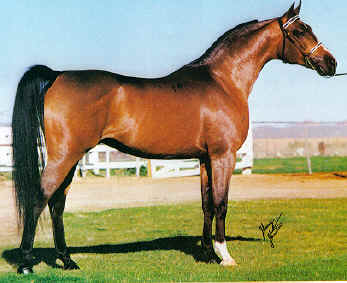
Was the surveillance of Janów Sale’s clients the norm or an exception? Was Hammer the only one that drew the attention of the secret police? “The scale of surveillance that we underwent was incredible”, Jacek Pawłowicz, director of the afore mentioned museum, told the weekly “Sieci” (2/2018, 8-14th of January). Meanwhile some people still think that the Arabian studs operated “outside of the system”, outside of history of that time. Unfortunately, that was not the case. Though not all documents are available so far, the mentioned here story of Armand Hammer clearly shows the times in which the sale of El Paso took place. The secret police was a powerful force and did not leave things to their own course, and definitely not when foreign currencies were involved. Saying that the Arabian studs were islands of freedom in a sea of communism is being naive or hypocritical. The truth was different and it is worth learning about it, because the truth is always more interesting than the most sweetened legend.
A calendar of visits by Armand Hammer to Poland during 1980/81
15.12.1980 – Armand Hammer arrives in Poland by private charter from Budapest, at the invitation of the first secretary of the PZPR Central Committee, Stanisław Kania.
16.12.1980 – The millionaire’s press conference.
19.09.1981 – Armand Hammer is received by the prime minister of Poland, General Wojciech Jaruzelski.
20.09.1981 – Hammer in Janów Podlaski, the morning before the sale, purchases the stallion El Paso and during the sale six additional mares.
21.09.1981 – The millionaire’s press conference and his departure through London to Los Angeles.
—————————————————————————————————–
*Służba Bezpieczeństwa – the main security organization in Poland from 1956 until the end of the People’s Republic (PRL) in 1989. A stronger body responsible for political repression in that times.



